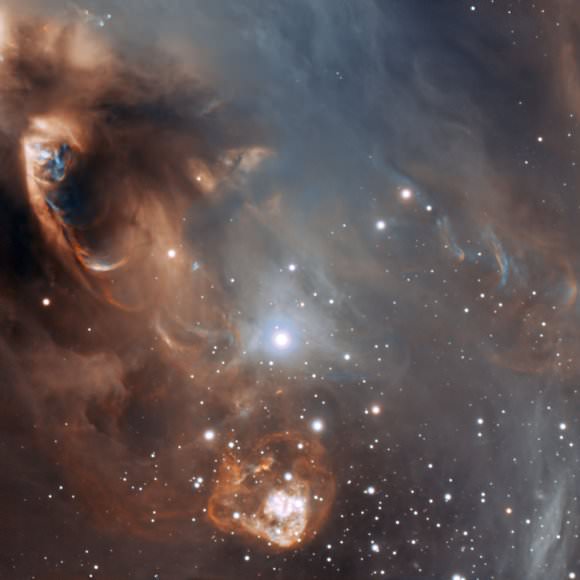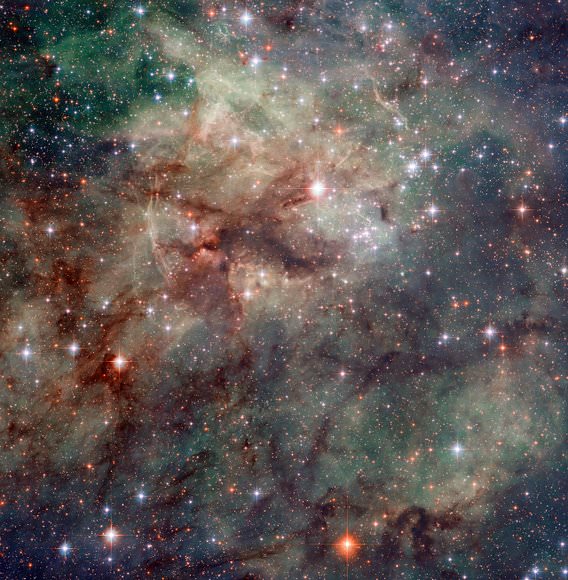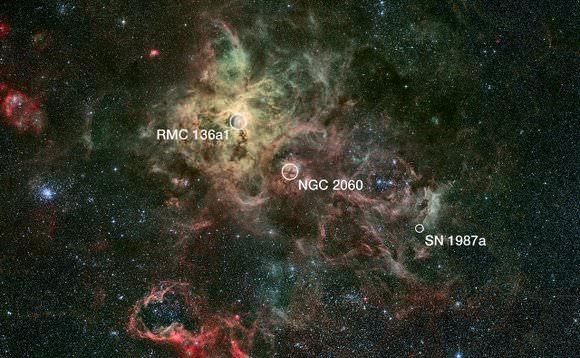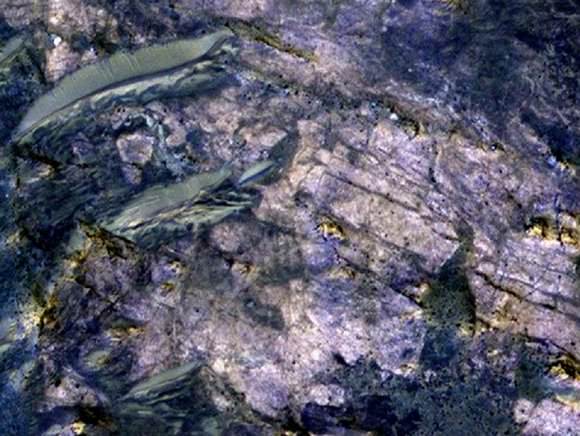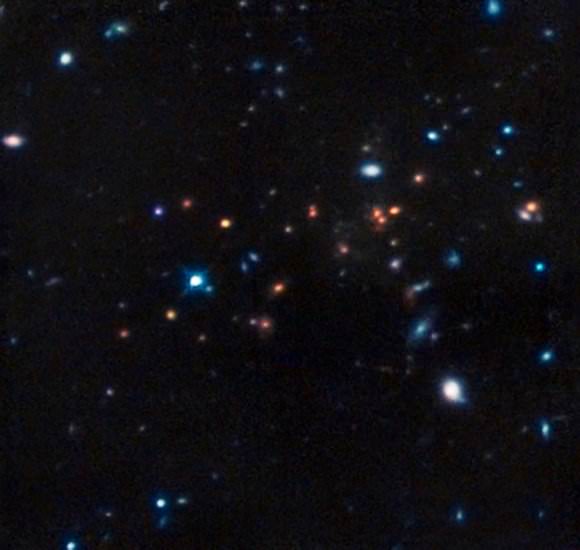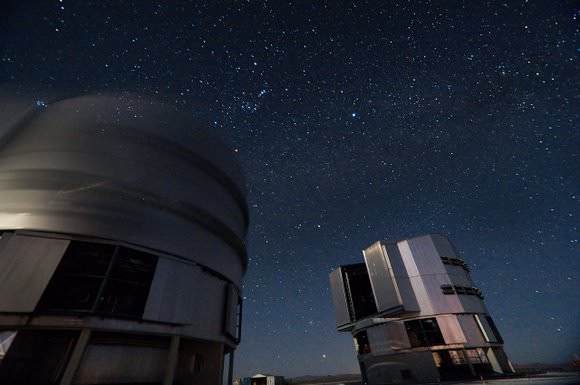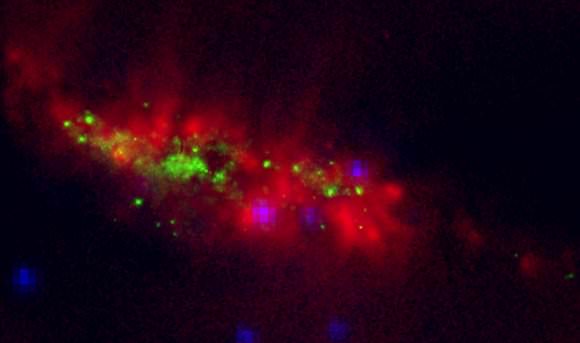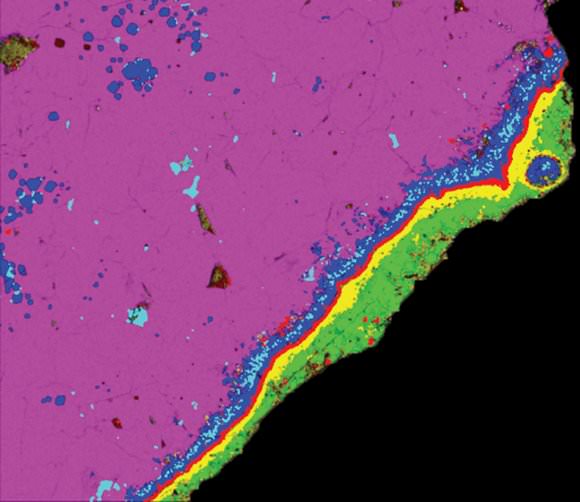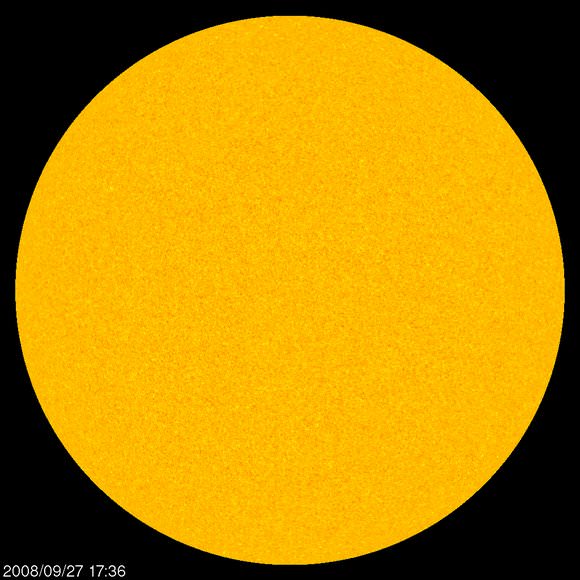[/caption]
Newborn stars spew material into the surrounding gas and dust, creating a surreal landscape of glowing arcs, blobs and streaks — and ESO’s Very Large Telescope (VLT) has caught some of them on candid camera. This new image, released today, hails from NGC 6729, a nearby star-forming region in the constellation Corona Australis.
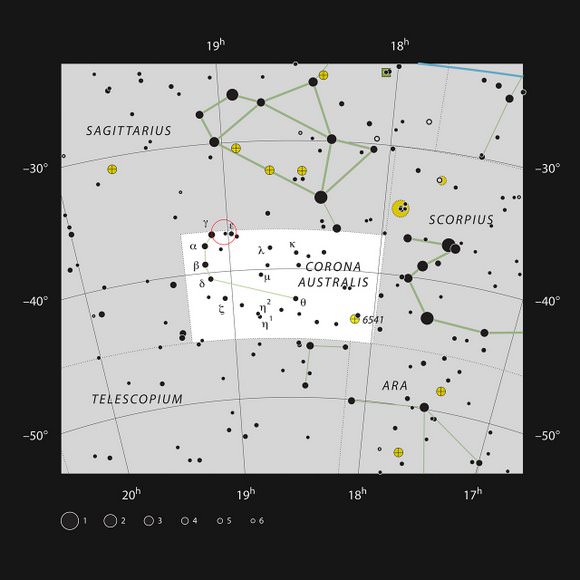
The stellar nursery NGC 6729 (RA 19h 01m 54.1s; dec -36° 57′ 12″) is part of one of the closest stellar nurseries to Earth and therefore one of the best studied. The new VLT image gives a close-up view of a section of this strange and fascinating region.
The data were selected from the ESO archive by Sergey Stepanenko of the Ukraine, as part of the Hidden Treasures competition. The 2010 competition gave amateur astronomers the chance to search through ESO’s astronomical archives, hoping to find a well-hidden gem that needed polishing by the entrants. Participants vied for prizes, including a free trip to see the VLT in Chile for the overall winner. Stepanenko’s picture of NGC 6729 was ranked third.
Stars form deep within molecular clouds and the earliest stages of their development cannot be seen in visible-light telescopes because they kick out so much dust. Although very young stars at the upper left of the image cannot be seen directly, the havoc they have wreaked on their surroundings dominates the picture. High-speed jets of material that travel away from the baby stars at velocities as high as one million kilometers per hour are slamming into the surrounding gas and creating shock waves. The shocks cause the gas to shine and create the strangely-colored glowing arcs and blobs known as Herbig–Haro objects.
The astronomers George Herbig and Guillermo Haro were not the first to see one of the objects that now bear their names, but they were the first to study the spectra of these strange objects in detail. They realized that they were not just clumps of gas and dust that reflected light, or glowed under the influence of the ultraviolet light from young stars — but were a new class of objects associated with ejected material in star-forming regions.
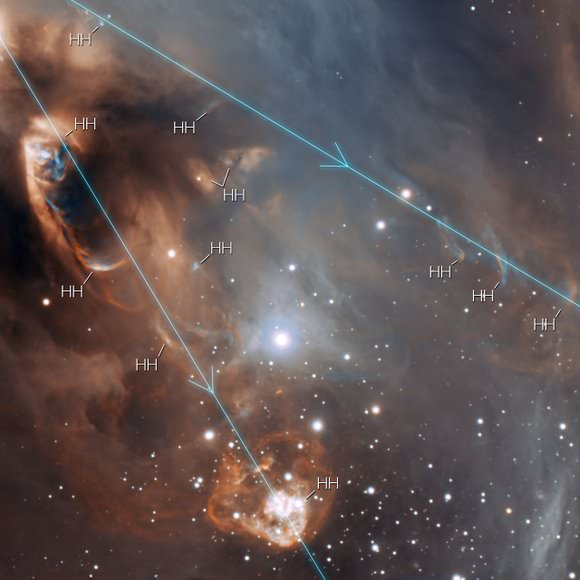
In this view, the Herbig–Haro objects form two lines marking out the probable directions of ejected material. One stretches from the upper left to the lower center, ending in the bright, circular group of glowing blobs and arcs at the lower center. The other starts near the left upper edge of the picture and extends towards the center right. The peculiar sabre-shaped bright feature at the upper left is probably mostly due to starlight being reflected from dust and is not a Herbig–Haro object.
The enhanced-color picture was created from images taken using the VLT’s FORS1 instrument. Images were taken through two different filters that isolate the light coming from glowing hydrogen (shown as orange) and glowing ionized sulphur (shown as blue). The different colors in different parts of this violent star formation region reflect different conditions — for example where ionized sulphur is glowing brightly (blue features) the velocities of the colliding material are relatively low — and help astronomers to unravel what is going on in this dramatic scene.
Source: ESO press release. The paper, from the Astrophysical Journal, is available here.

